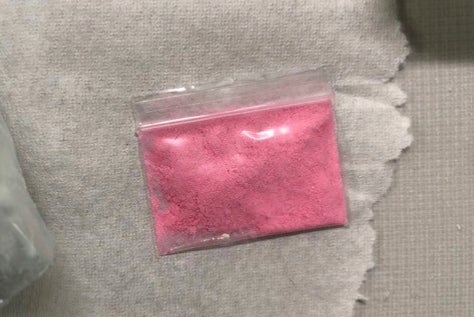What is the recreational drug 'pink cocaine'?
A recreational drug called “pink cocaine” is getting attention and causing confusion since it doesn't typically contain cocaine

Your support helps us to tell the story
From reproductive rights to climate change to Big Tech, The Independent is on the ground when the story is developing. Whether it's investigating the financials of Elon Musk's pro-Trump PAC or producing our latest documentary, 'The A Word', which shines a light on the American women fighting for reproductive rights, we know how important it is to parse out the facts from the messaging.
At such a critical moment in US history, we need reporters on the ground. Your donation allows us to keep sending journalists to speak to both sides of the story.
The Independent is trusted by Americans across the entire political spectrum. And unlike many other quality news outlets, we choose not to lock Americans out of our reporting and analysis with paywalls. We believe quality journalism should be available to everyone, paid for by those who can afford it.
Your support makes all the difference.A recreational drug called “pink cocaine” is getting attention and causing confusion since it doesn't typically contain cocaine.
The pink powder — really a grab bag of different drugs dyed pink — has turned up in drug seizures, prompting warnings from law enforcement.
Pink cocaine is also known as “tusi,” but both nicknames for the powder are more about marketing than reality. Experts say it rarely contains cocaine and is more likely to contain ketamine, a drug with very different effects.
Why is it pink?
Pink cocaine is pink thanks to food coloring or dye, said Joseph Palamar, who studies drug trends at NYU Langone Health in New York.
“Sometimes it has cocaine in the mix, but it’s typically more of a ketamine concoction,” Palamar said. Studies have found batches containing methamphetamine, MDMA, bath salts, caffeine and opioids.
“It’s a concoction that anyone can make if they have a couple of drugs and a pink dye,” Palamar said.
The word “tusi” may have been coined to mimic 2C-B, a recreational drug used on the rave scene in the 1990s and known for euphoric effects, according to a paper Palamar published last year. Drug analyses that Palamar reviewed showed tusi didn't typically contain 2C-B.
Today, young people may not know the history of the name tusi and they may be confused by the name pink cocaine, he said.
“It’s just some pretty powder that their friends are using. They probably have no idea what it’s supposed to be,” he said.
Why is pink cocaine dangerous?
The danger is tied to not knowing what's in it. Users could wind up with undesired effects or take a larger amount than past experience tells them they can handle. Ketamine is a powerful anesthetic approved for use during surgery but in recent years it has been used recreationally and as a treatment for depression, anxiety and pain. It can cause hallucinations and can impact breathing and the heart.
“Ketamine is not a fun drug to most people," Palamar said. "It kind of puts you in your own little world and things tend to feel very alien when you’re on it, especially in large doses.”
Someone who's drunk at a party and thinks cocaine might counter alcohol's effects is going to be unpleasantly surprised by pink cocaine that's actually mostly ketamine, he said.
“If you’ve been drinking, it’s going to make you sick to your stomach and the dissociative effects are not going to be very pleasant,” he said.
Where is pink cocaine coming from?
In May, the U.S. Coast Guard reported seizing pink cocaine among other drugs off the coasts of Mexico and Central and South America.
“That was the first time that I heard of large batches being imported into the U.S. as tusi," Palamar said. It could just as easily be made by drug dealers in the United States, who mix their own, he said.
___
The Associated Press Health and Science Department receives support from the Howard Hughes Medical Institute’s Science and Educational Media Group. The AP is solely responsible for all content.